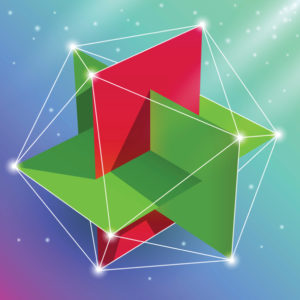As my imaginary conversation with Laban continued, the topic of the icosahedron came up.
CLM: Let’s talk more about the kinesphere.

R.Laban: Think of it as the bubble of territory surrounding your whole body – the space you can reach with your limbs without taking a step.
CLM: Does this movement space have a shape? Is it a sphere?
RL: Ideally yes. But I needed to give it a more definitive shape, with some landmarks the dancer or mover could use for orientation. Eventually, I chose the icosahedron.
CLM: I know that’s one of the Platonic solids. There are only five of these regular polyhedra, and they were all known to the Greeks. However, the icosahedron is not the most familiar one because it isn’t found in nature. Why did you pick the icosahedron?
RL: Well, the cube is probably the most familiar shape, but it isn’t very spherical. The icosahedron comes much closer. And if you set it on an edge, the twelve corners, the edges, and the internal rays can be used as a kind of longitude and latitude for mapping movement.
CLM: So you use the icosahedron to create a geography for movement space. That’s amazing.
RL: There’s a lot more to it….
CLM: I’m sure there is, but let’s get something cool to drink!
